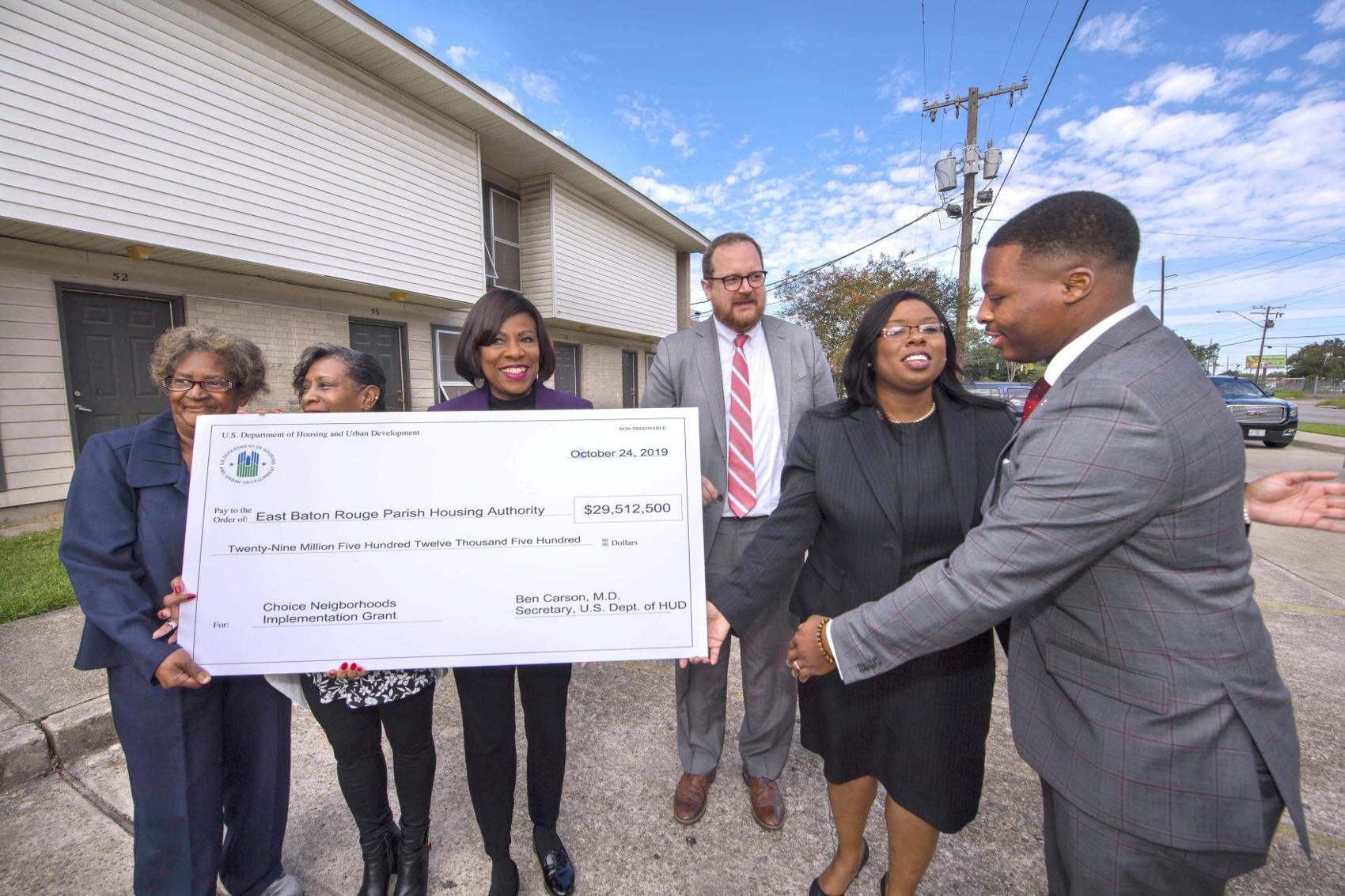
East Baton Rouge Parish Housing Authority CEO J. Wesley Daniels, right, hugs EBR Housing Authority board chairman Dianna Payton, just after they, U.S. Dept. of Housing and Urban Development (HUD) Assistant Secretary for Public and Indian Housing Hunter Kurtz, third from right, and others posed with a ceremonial check for over $29 million, symbolizing a HUD Choice Neighborhoods Implementation Grant to East Baton Rouge Parish Housing Authority and the City of Baton Rouge, Thursday, Oct. 24, 2019 at a gathering outside the Ardenwood Village public housing complex. Others, from left, are Beverly Porch, vice-president of the Ardenwood Village residents council, Beverly Claborn, the council's secretary, and EBR Mayor-President Sharon Weston Broome. The complex itself will benefit from the replacement of all of its 93 units, among other improvements the grant will fund.

From left, foreground, U.S. Dept. of Housing and Urban Development (HUD) Assistant Secretary for Public and Indian Housing Hunter Kurtz, East Baton Rouge Parish Housing Authority CEO J. Wesley Daniels and EBR Mayor-President Sharon Weston Broome talk before remarks and presentation of a ceremonial check for over $29 million, symbolizing a HUD Choice Neighborhoods Implementation Grant to the EBR Parish Housing Authority and the City of Baton Rouge, Thursday, Oct. 24, 2019 at a gathering outside the Ardenwood Village public housing complex. The complex itself will benefit from the replacement of all of its 93 units, among other improvements the grant will fund.
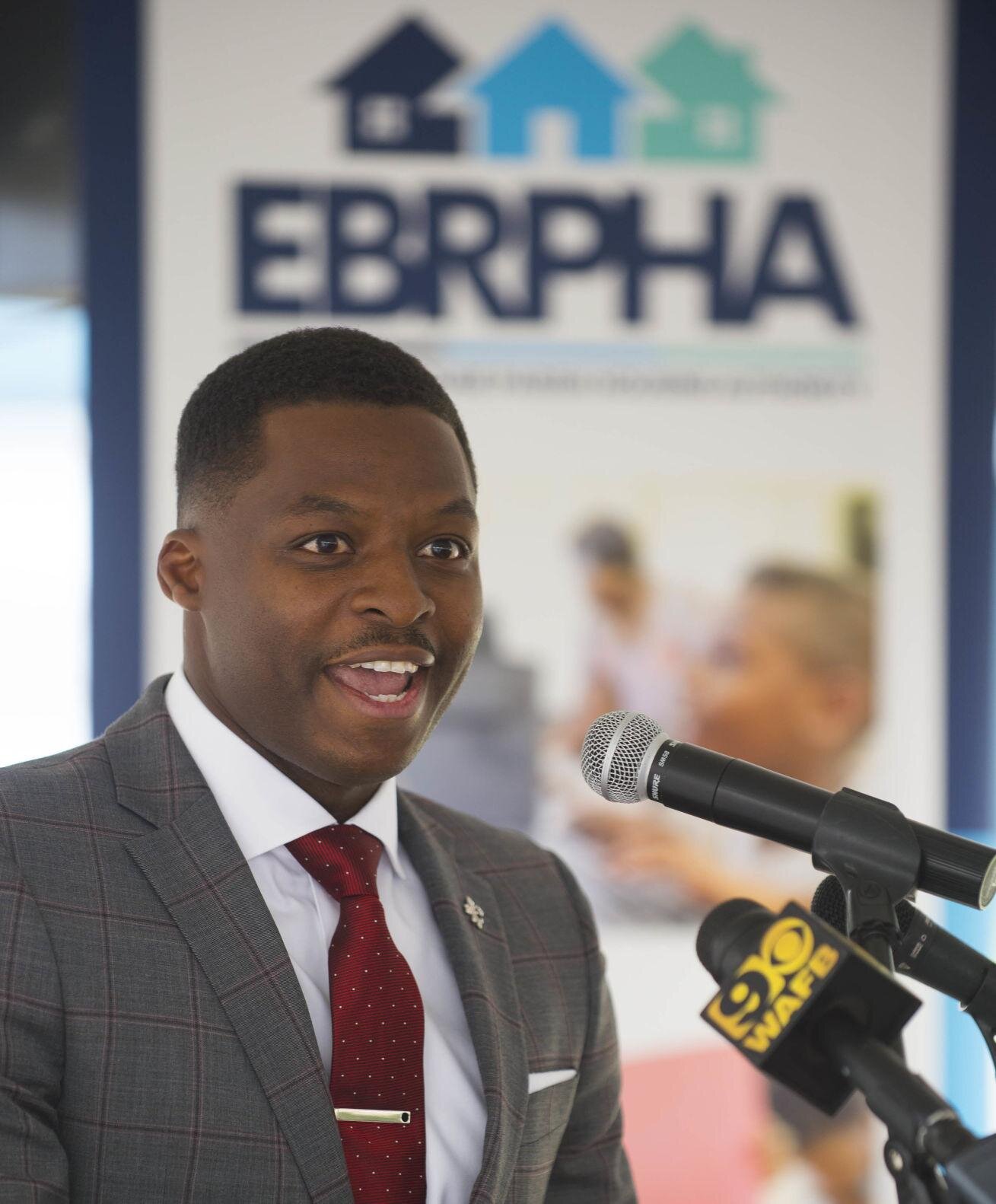
East Baton Rouge Parish Housing Authority CEO J. Wesley Daniels speaks at a gathering to celebrate the $29.5 million U.S. Dept. of Housing and Urban Development (HUD) Choice Neighborhoods Implementation Grant to East Baton Rouge Parish Housing Authority and the City of Baton Rouge, Thursday, Oct. 24, 2019 outside the Ardenwood Village public housing complex.
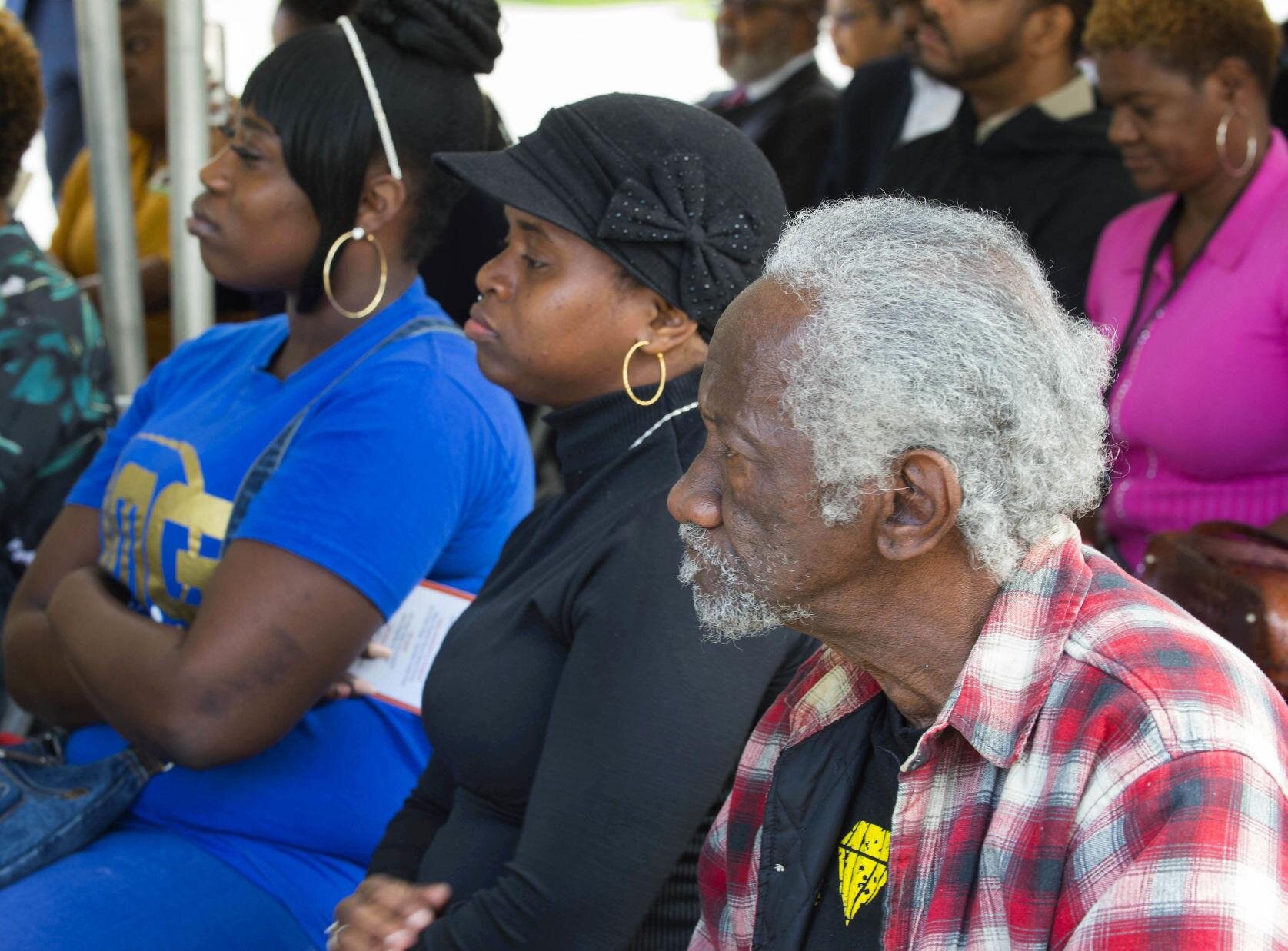
Turner Plaza resident Charles Nellon, right, and Ardenwood Village resident Valencia Stevenson, center listen at a gathering to celebrate the U.S. Dept. of Housing and Urban Development's (HUD) $29.5 million Choice Neighborhoods Implementation Grant to East Baton Rouge Parish Housing Authority and the City of Baton Rouge, Thursday, Oct. 24, 2019 outside the Ardenwood Village public housing complex. Stevenson's friend Amber Lang is at left. The complex itself will benefit from the grant with the replacement of all of its 93 units, among other improvements the grant will fund.
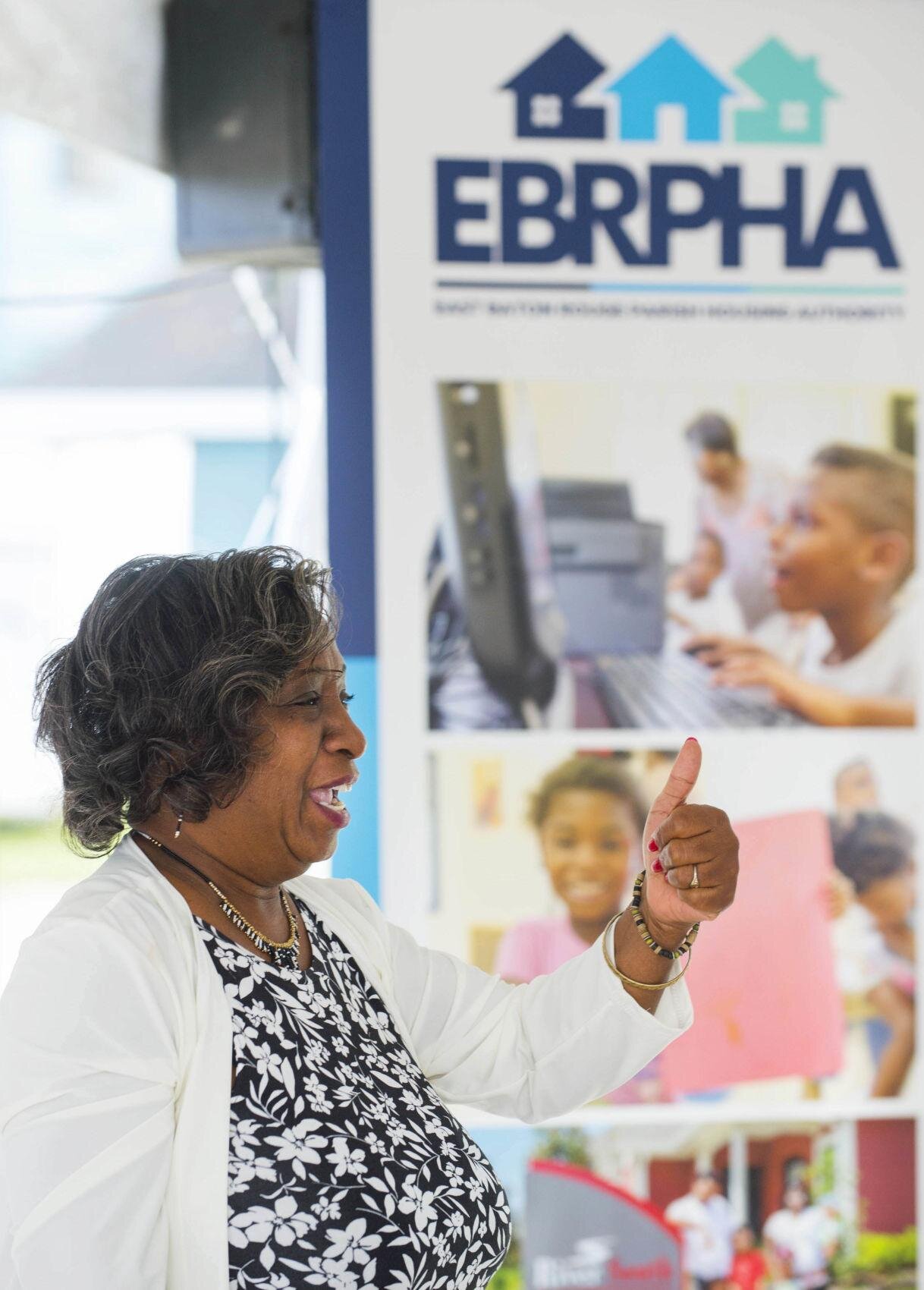
Ardenwood Village residents council secretary Beverly Claborn gives a thumbs-up, during her remarks at a ggathering to celebrate the U.S. Dept. of Housing and Urban Development's (HUD) $29.5 million Choice Neighborhoods Implementation Grant to East Baton Rouge Parish Housing Authority and the City of Baton Rouge, Thursday, Oct. 24, 2019 outside the Ardenwood Village public housing complex. The complex itself will benefit from the grant with the replacement of all of its 93 units, among other improvements the grant will fund.
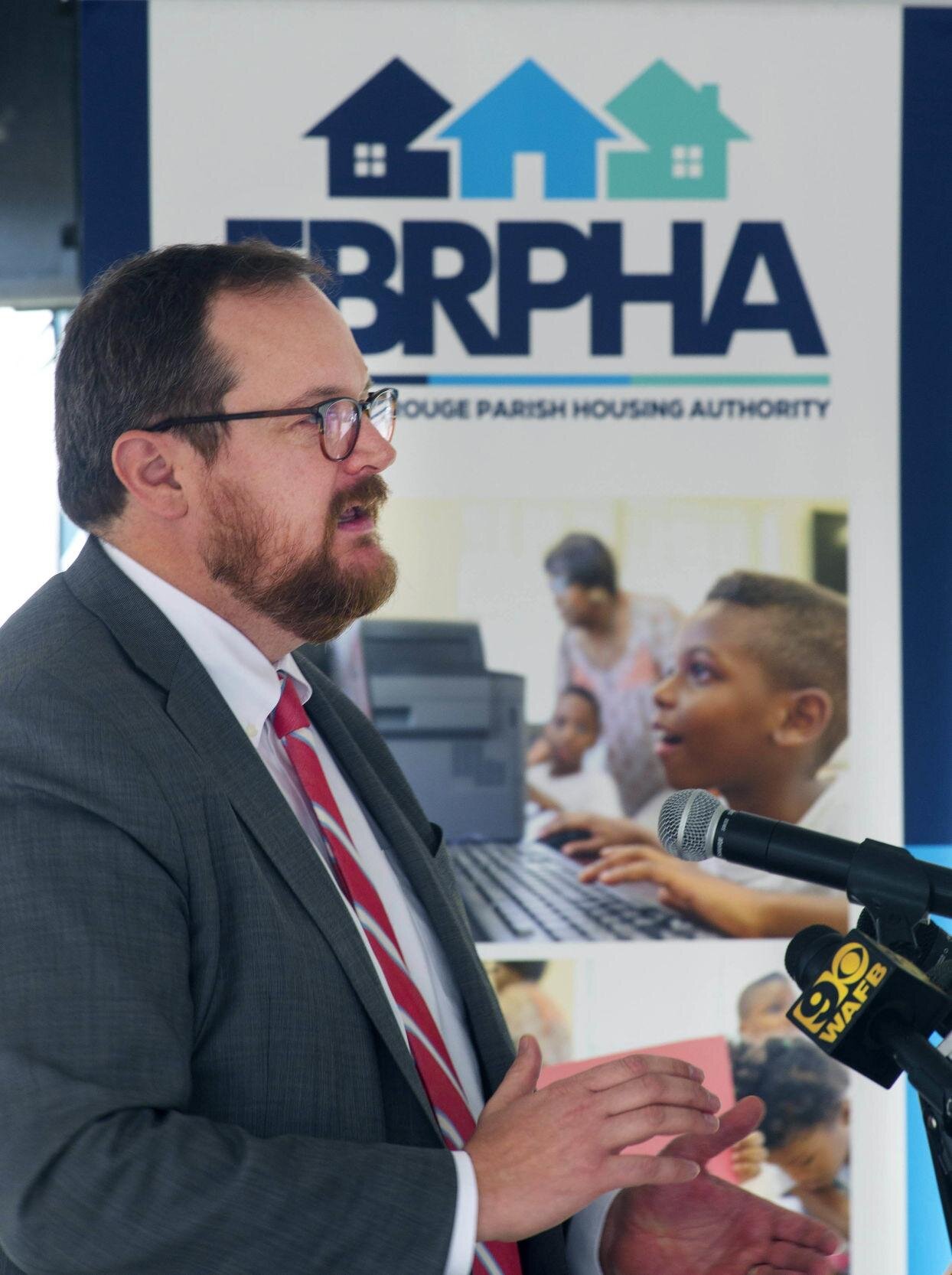
U.S. Dept. of Housing and Urban Development (HUD) Assistant Secretary for Public and Indian Housing Hunter Kurtz speaks at a gathering to celebrate HUD's $29.5 million Choice Neighborhoods Implementation Grant to East Baton Rouge Parish Housing Authority and the City of Baton Rouge, Thursday, Oct. 24, 2019 outside the Ardenwood Village public housing complex.

Senator Regina Barrow, left, D-Baton Rouge, chats with Ardenwood Village resident Janet Dunn, right, who holds grandchildren Maci Ruffin, 1, and Madison Ruffin, 2, at the U.S. Dept. of Housing and Urban Development (HUD) gathering to celebrate the $29.5 million Choice Neighborhoods Implementation Grant to East Baton Rouge Parish Housing Authority and the City of Baton Rouge, Thursday, Oct. 24, 2019 outside the Ardenwood Village public housing complex. The complex itself will benefit from the grant with the replacement of all of its 93 units, among other improvements the grant will fund.
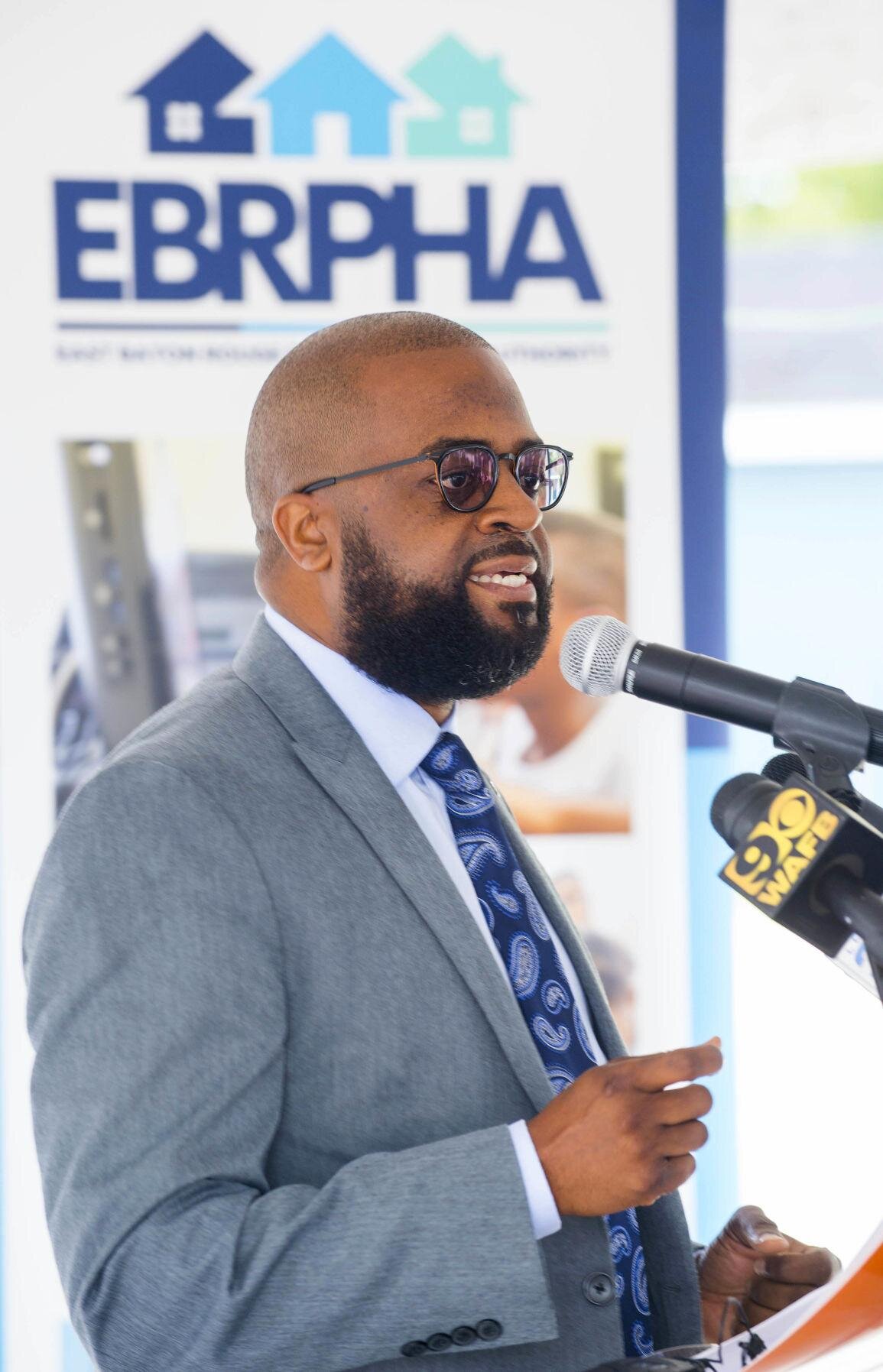
Louisiana Housing Corporation executive director Keith Cunningham speaks at a gathering to celebrate the U.S. Dept. of Housing and Urban Development's (HUD) $29.5 million Choice Neighborhoods Implementation Grant to East Baton Rouge Parish Housing Authority and the City of Baton Rouge, Thursday, Oct. 24, 2019 outside the Ardenwood Village public housing complex.

East Baton Rouge Parish Housing Authority CEO J. Wesley Daniels.
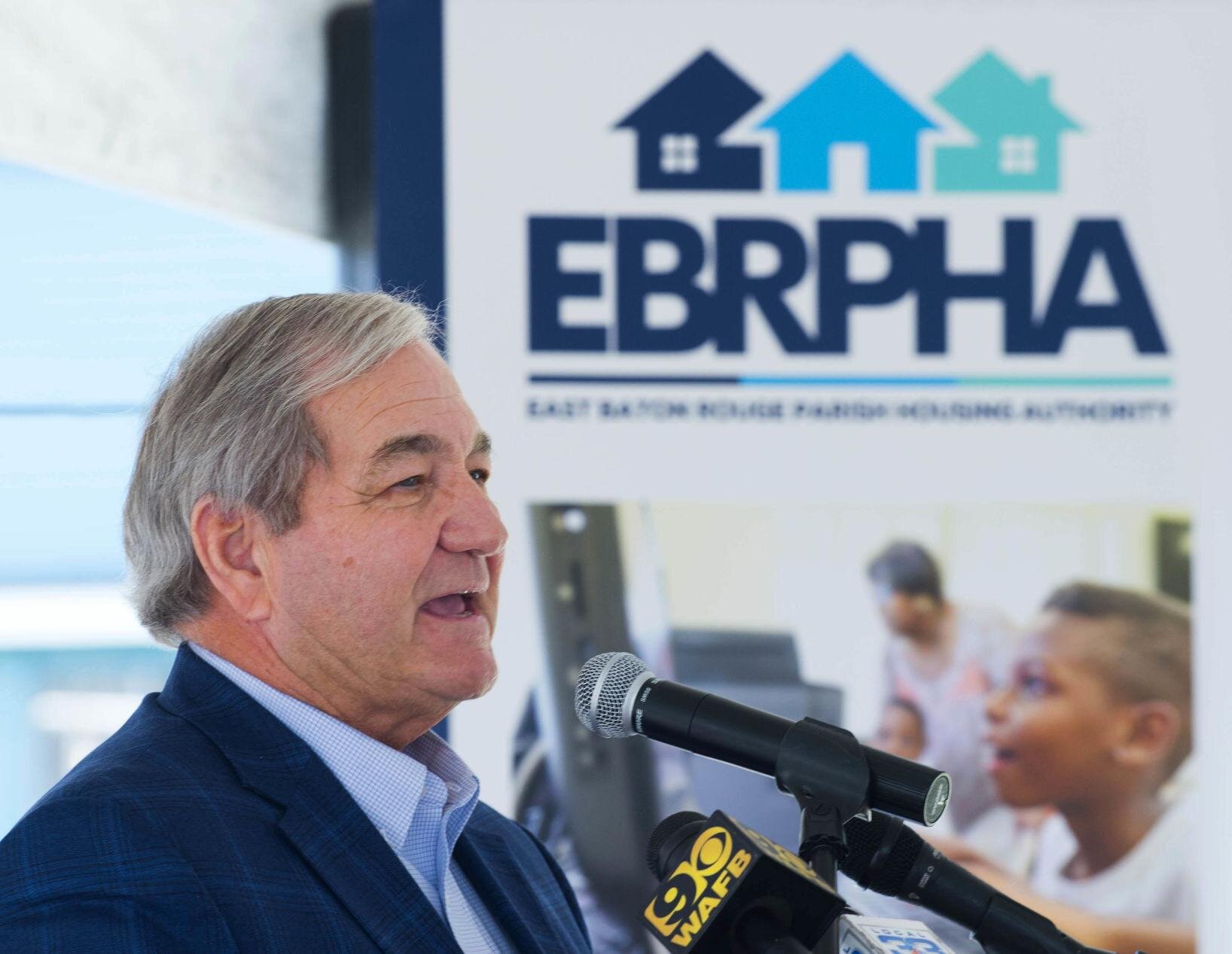
Baton Rouge Area Foundation Executive Vice-President John Spain speaks at a gathering to celebrate the U.S. Dept. of Housing and Urban Development (HUD) $29.5 million Choice Neighborhoods Implementation Grant to East Baton Rouge Parish Housing Authority and the City of Baton Rouge, Thursday, Oct. 24, 2019 outside the Ardenwood Village public housing complex.
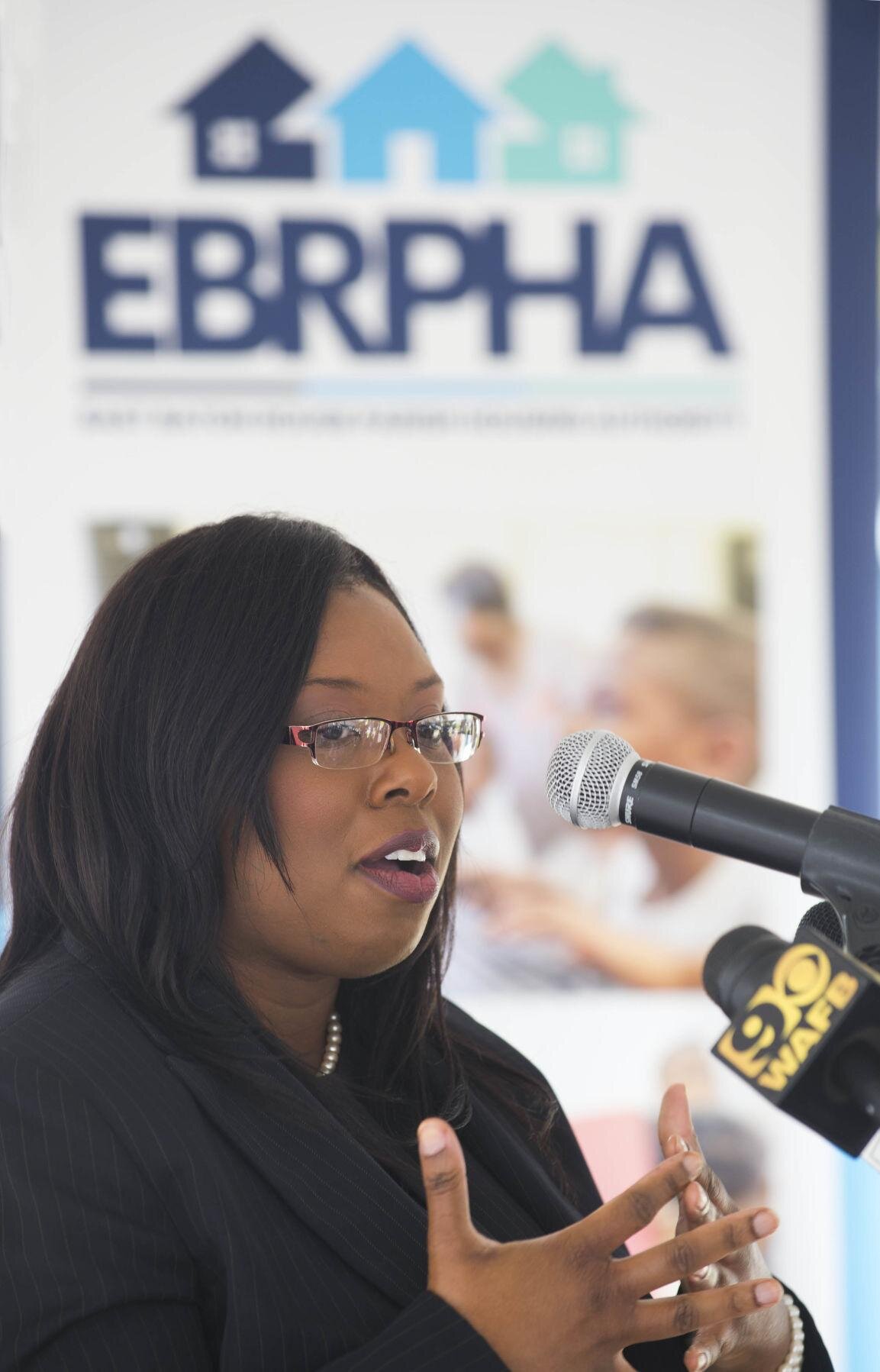
East Baton Rouge Housing Authority board chairman Dianna Payton speaks at a gathering to celebrate the U.S. Dept. of Housing and Urban Development's (HUD) $29.5 million Choice Neighborhoods Implementation Grant to the EBR Parish Housing Authority and the City of Baton Rouge, Thursday, Oct. 24, 2019 outside the Ardenwood Village public housing complex.

